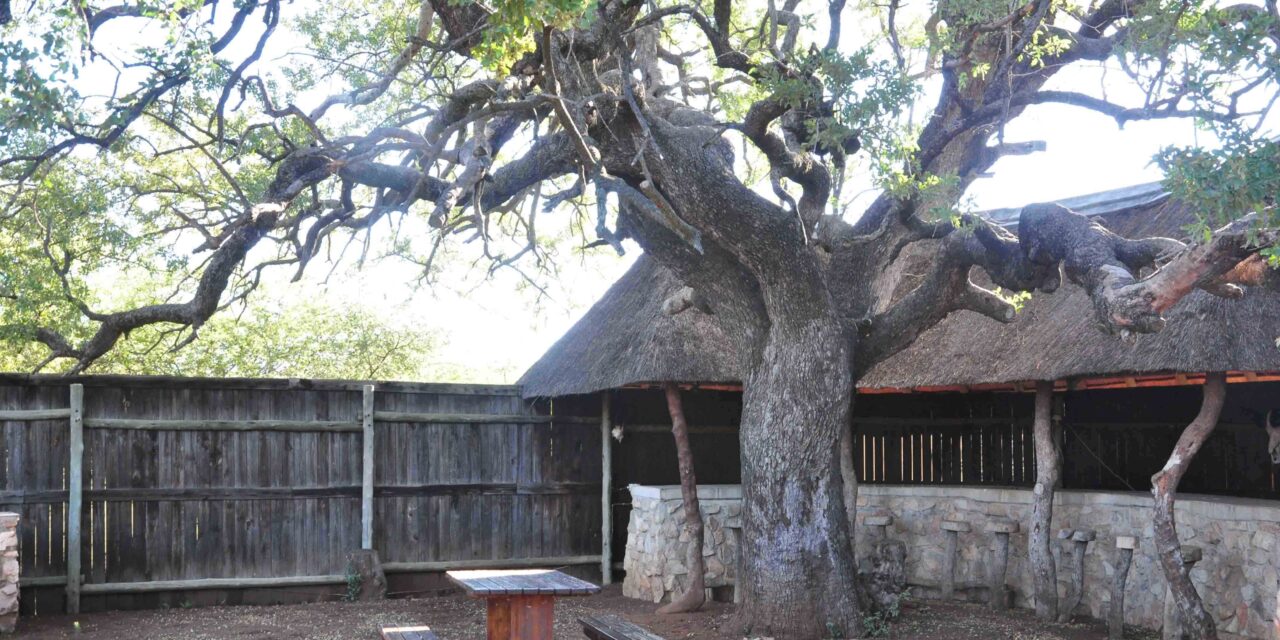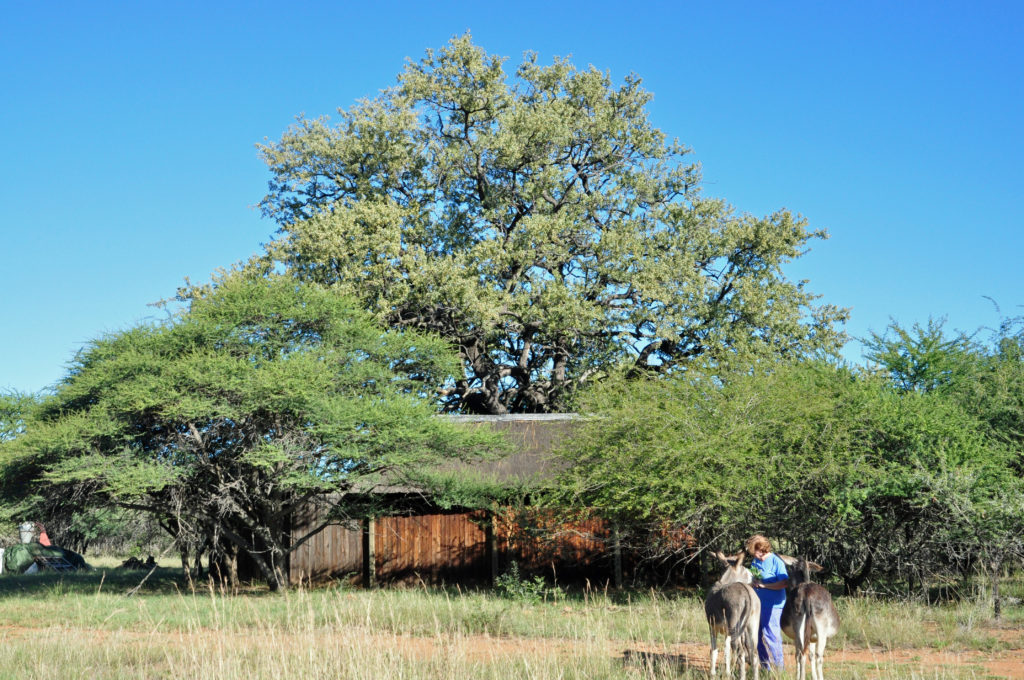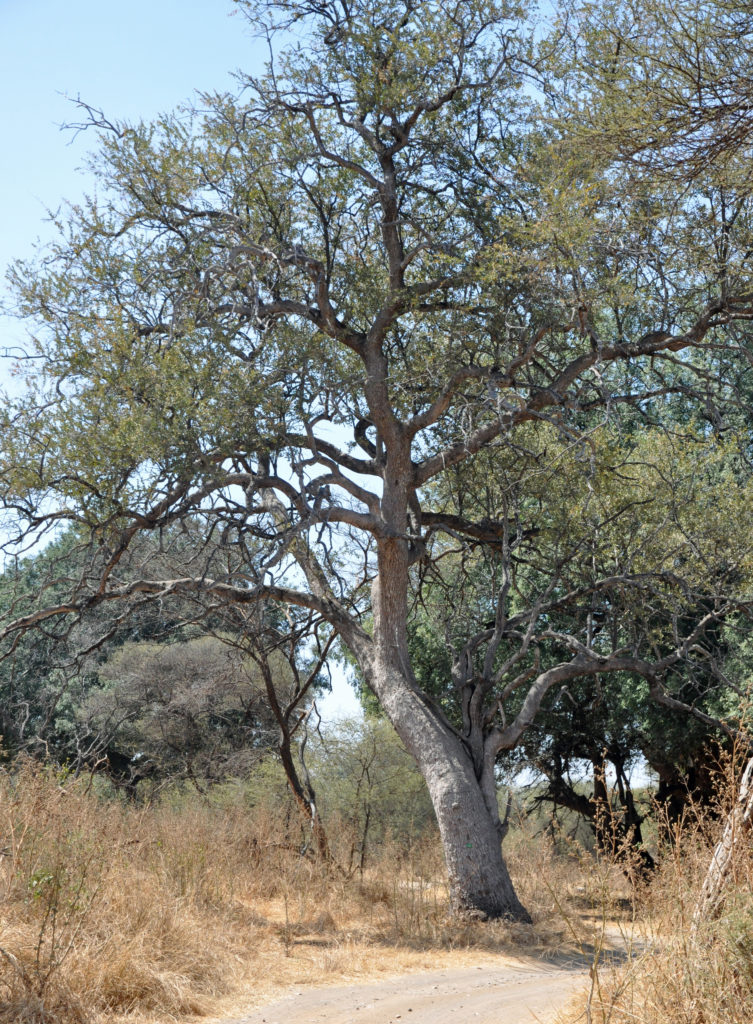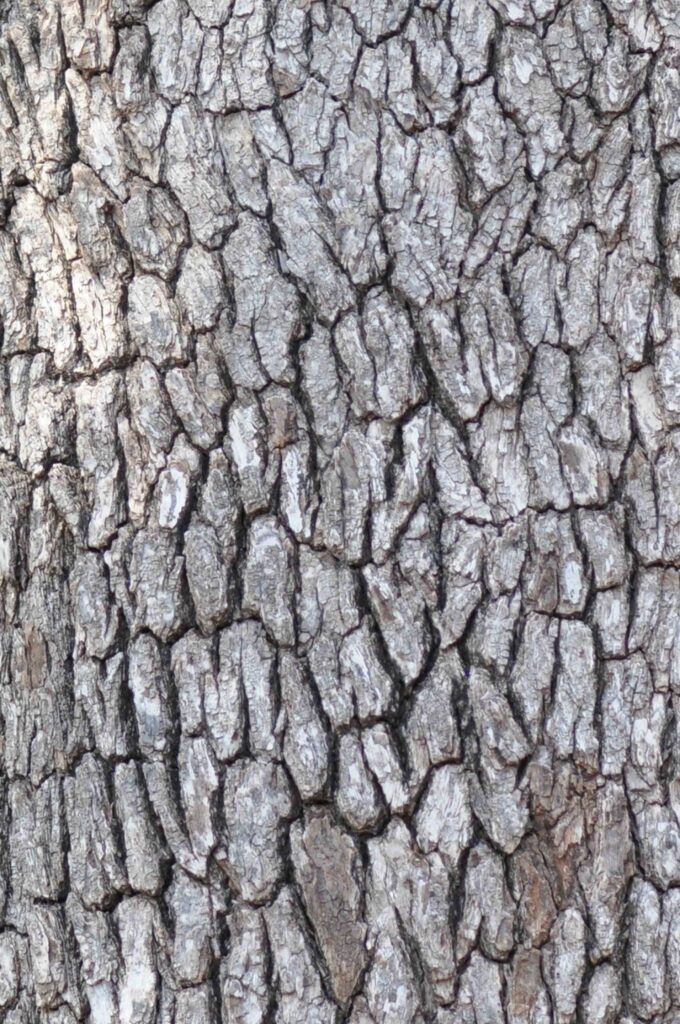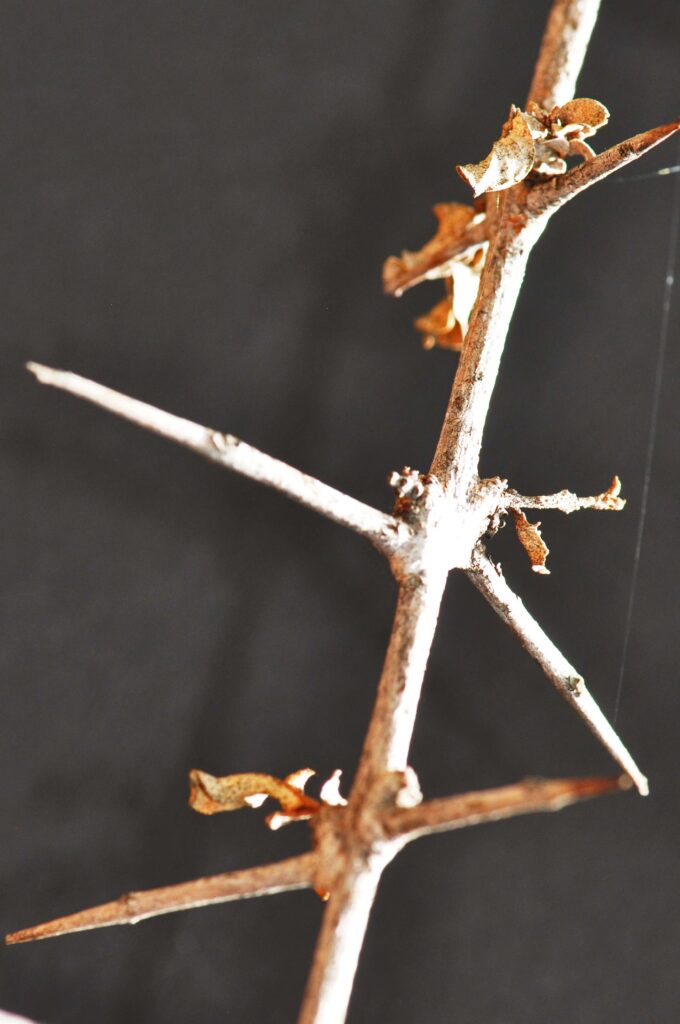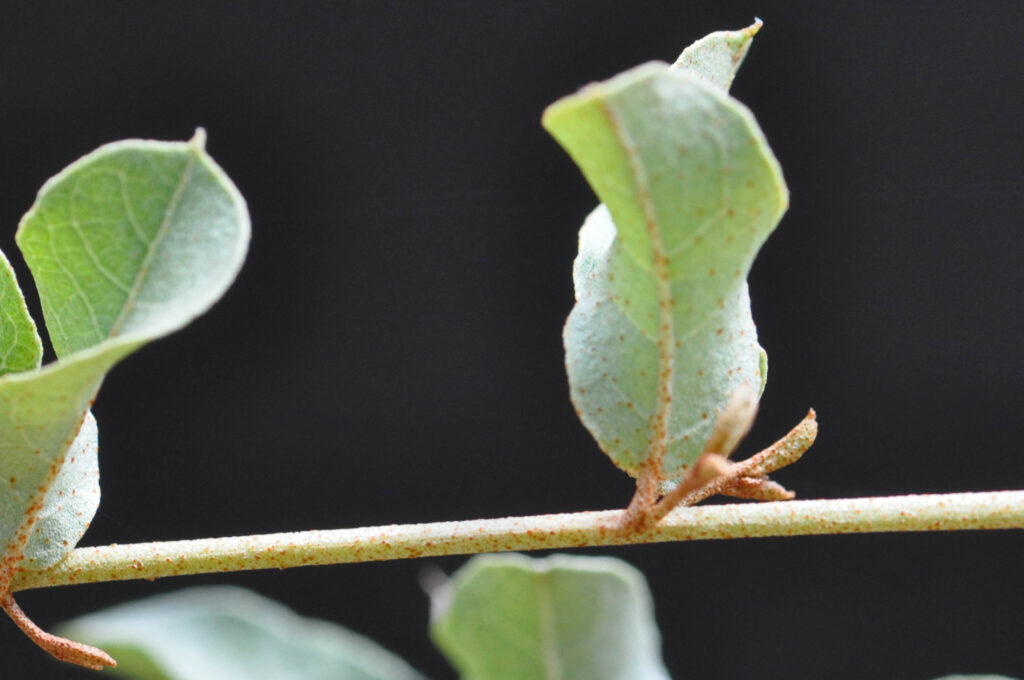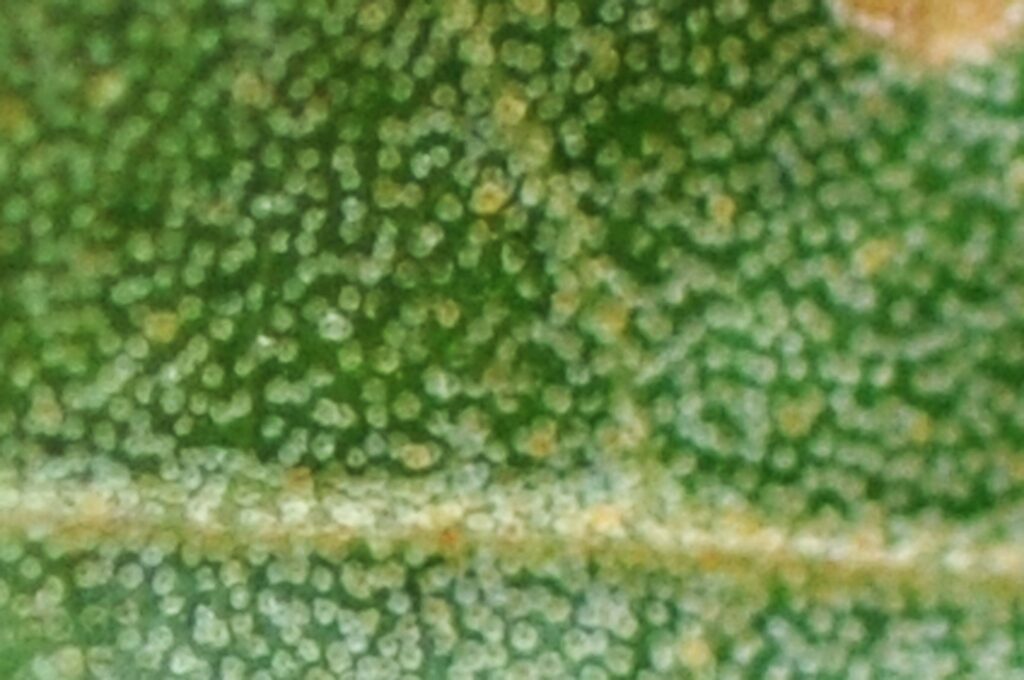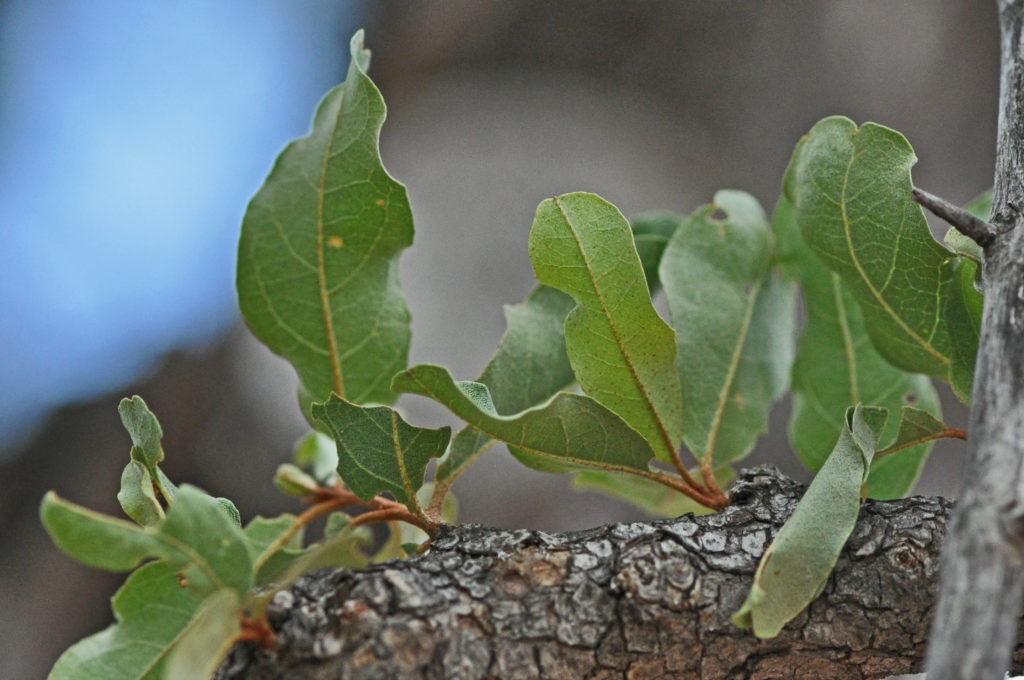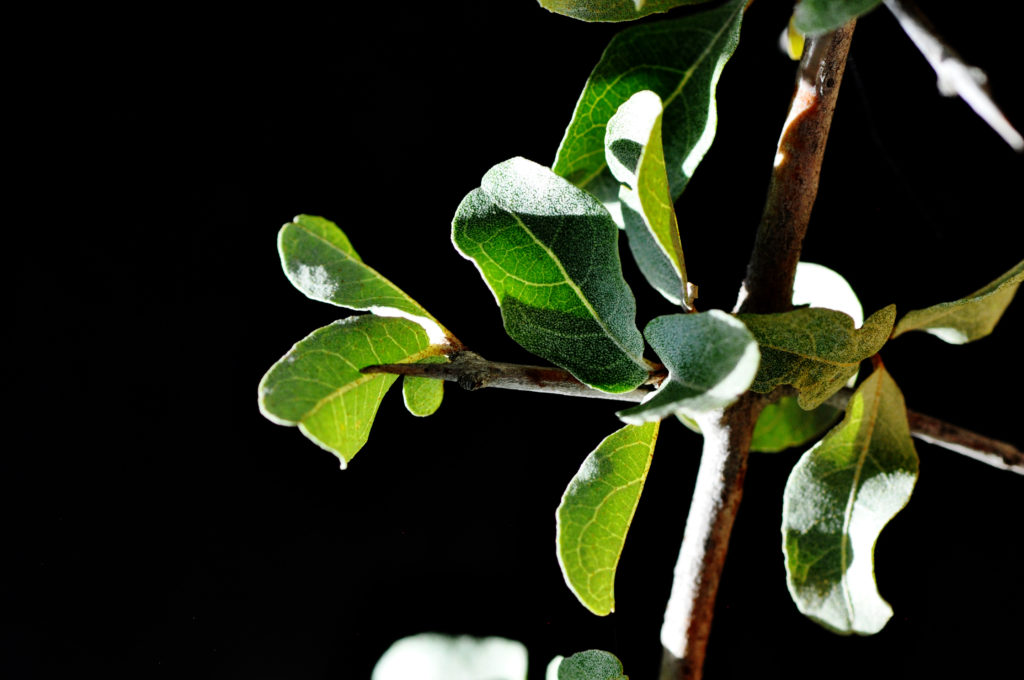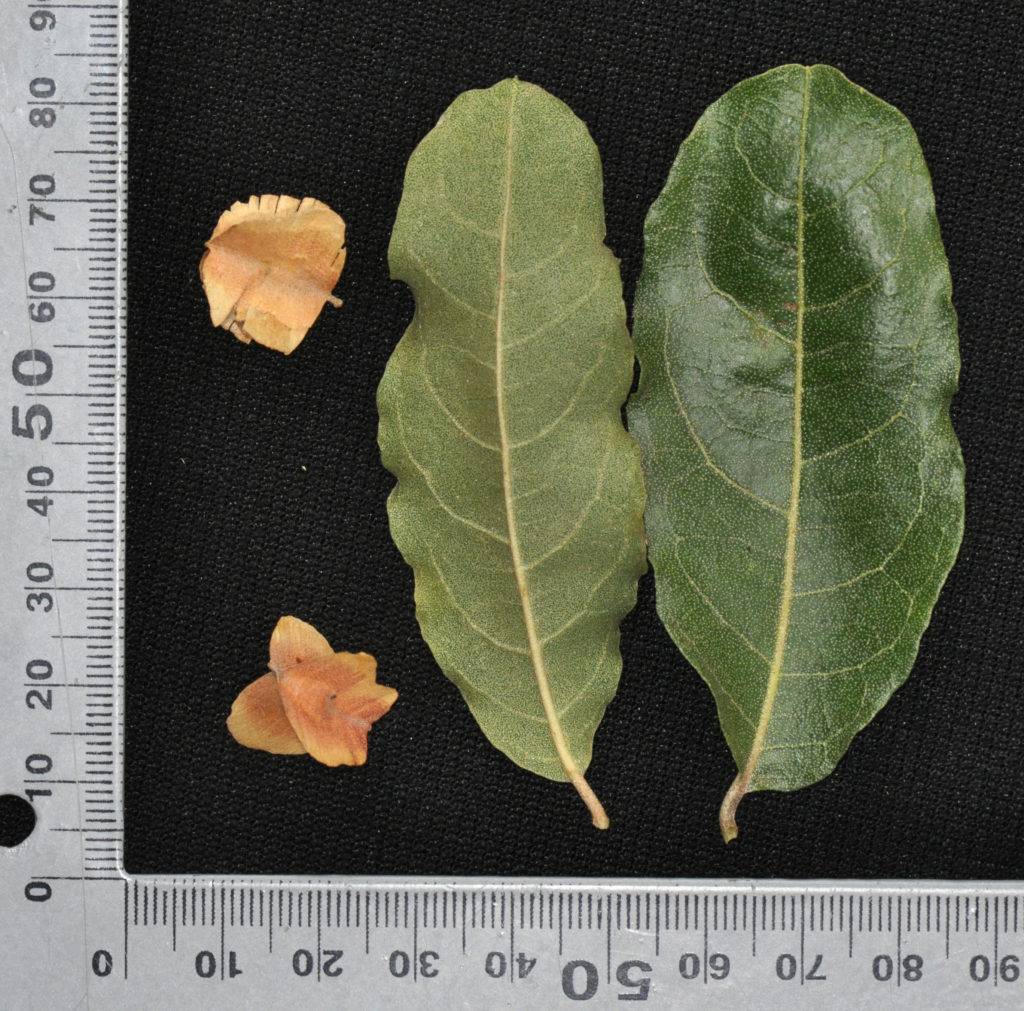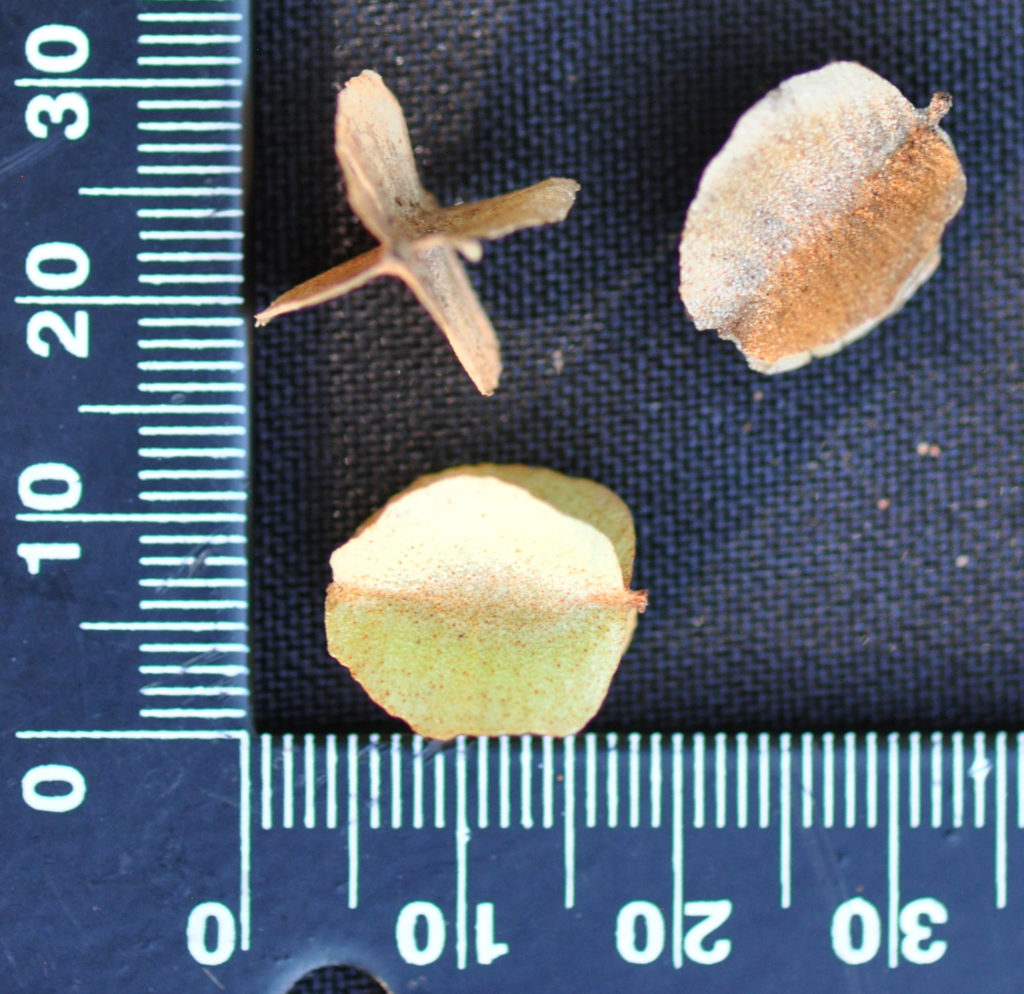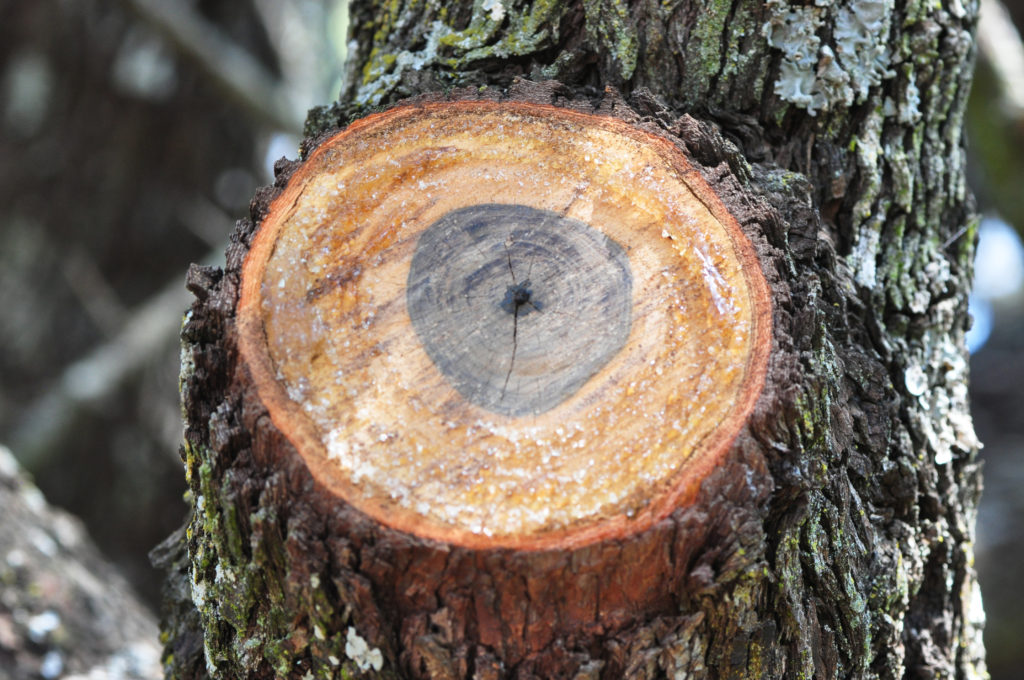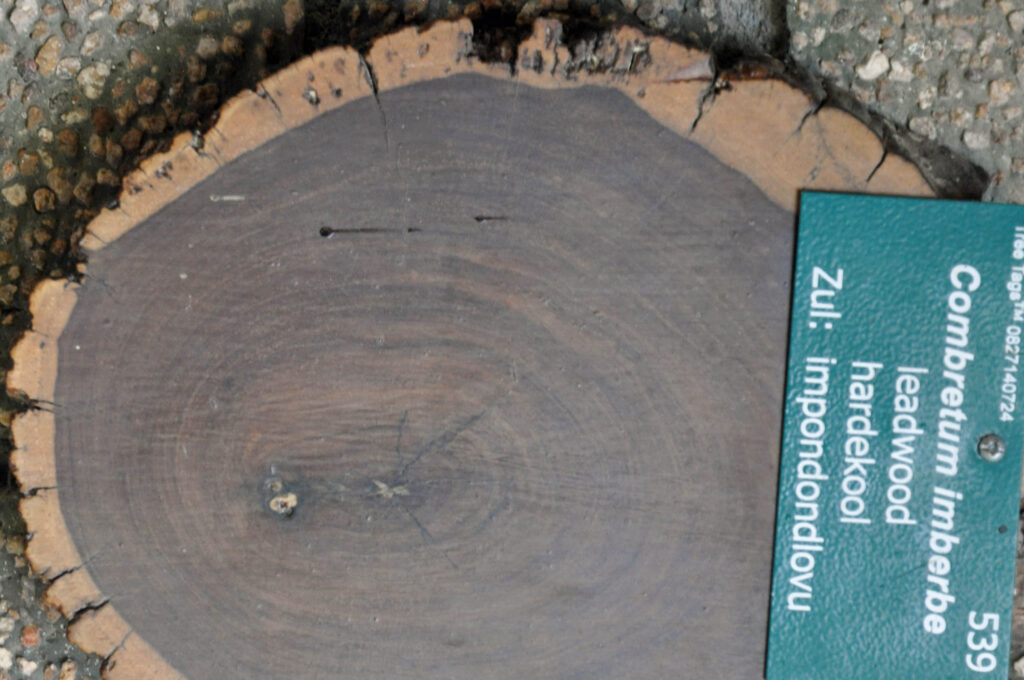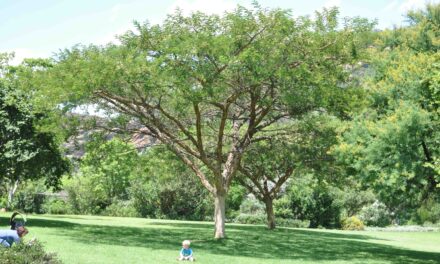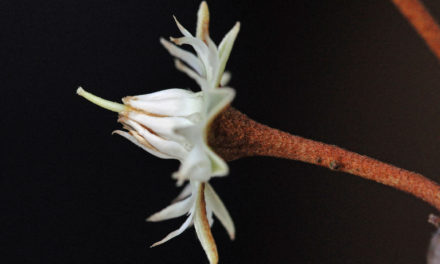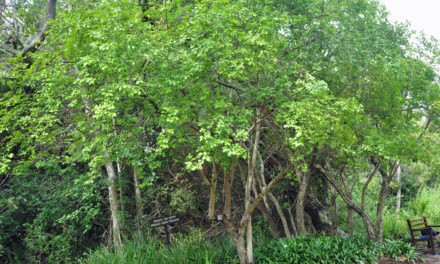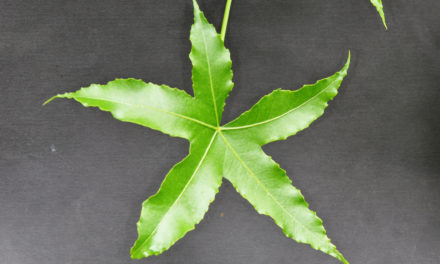General Info – summary
This slow growing Tree is tall (20+m high) and has dense, hard wood. It is up to 1,5m wide and the bark is divided into whitish/brown blocks. The small greyish green and wavy Leaves are simple with entire margins. Small, bisexual actinomorphic Flowers are in spikes with up to 30 flowers. Stamens occur outside the inferior ovary with its single style. Each small, 4-winged Fruit has one wind-dispersed seed.
Description
Combretum imberbe
Previous Names: Combretum imberbe var. dielsii, Combretum imberbe var. petersii, Combretum primigenum.
SA Tree No. 539.
Common names: (Afr) Hardekool, Hardekoolboom, Loodhout, Menshoutboom, Opregtehardekool. (Eng) Bastard Yellow Wood, Elephant Trunk, Elephoat Tusk Tree, Ironwood, Ivory Tree, Lead Wood, Leadwood. (isiZulu) Impondondlovu, Isikwishi, Umangwenja, Umbondwe-omnyama. Uphanda. (IsiNdebele) Imonso. (Northern Sotho) Mohwelere-tshipi, Motswiri. (Setswana) Motswiri. (siSwati) Impondozendhlovu, Mpondvondlovu, Ummondo, Umphulumbu. (Tshivenda) Mudzwiri, Muheri, Muhiri. (Tshivenda) Mudzwiri, Muheri, Muhiri. (Xitsonga) Mondzo, Motswiri, Ummono, Umphulumbu.
Family: Combretaceae (Bushwlillow family). In this family, there are about 16 genera, containing about 530 species. In South Africa, there are 5 genera and 41 species. Here the genera with Trees include Combretum, Lumnitzera, Pteleopsis and Terminalia. The simple and usually entire Leaves lack stipules. Flowers are usually bisexual, usually with twice the number of stamens as sepals or petals. The inferior Ovary has 1 locule and usually only 1 of the ovules develops into a seed. Fruit is usually indehiscent and may be winged or ridged.
Name derivation: Combretum – climbing plant. imberbe – beardless / lack of hairs. This may refer to the relatively few hairs on the leaves.
Conservation: National Status: L C. (Least Concern). Assessors: 2005 (W. Foden and L. Potter). This is a protected tree in the South Africa. Concern has been expressed about excessive harvesting of this tree.
Tree
This usually single stemmed Tree (photo 87) is perhaps one of the slowest growing trees of the lowveld. It may become large, reaching 20m+ high and, carbon dated to be in excess of 1 000 years old. The grey-green appearance is clear in (photo 13). {Compare the height and colour with the “acacias” in the foreground of this tree}. The main branches are large and located high up. The tree has a rounded, spreading Crown. Dead branches tend to remain on the tree. The single Bowl (a single unbranched stem, the trunk) can reach 1,5m wide. The usually high up branches are reddish brown to light grey. The pale Bark can be almost white, to dark grey (photos 358) and up to 1cm thick. It is rough and divided into smallish blocks with near parallel sides running lengthwise with irregular transverse cracks (photo 358). Young Branches have opposite twigs, which may have spine-tipped ends and possess reddish scales (photo 113). Dead branches tend to remain on the tree. This, the tallest of the Combretum species, has a large taproot and well-developed lateral roots.
- 13 2018/03/26 Kwamahla Lodge. Photo: David Becking.
- 87 2014/8/31 Mupungubwe NP. Photo: David Becking.
- 358M 2014/02/19 Marakele NP. Photo: David Becking.
- 113 2015/03/17 Borakalalo NP. Photo: David Becking.
Leaves
This often-delayed deciduous tree has opposite or nearly so Leaves (photo 116) that are approximately oblong, elliptic or obovate (like an upside down egg, with the narrower end at the base). These smallish – up to 8 x 3cm (photo 942), leathery leaves are simple (have a single blade which may have incisions that are not deep enough to divide the leaf into leaflets). They are greyish green and slightly shiny above and lighter below (photo 942). The leaves are thinly textured to leathery, and both surfaces, including veins, may have tiny, dense, silvery scales. These are more visible with a good hand lens (enlarged photo 360). These scaly leaves help to give the tree an overall grey appearance (photo 13 under Tree). The upper surface may have a few hairs, and, on the lower surface, hairs may occur on the 4-7 side veins. On this side, the Midrib is raised. The Apex is blunt, notched or rounded and may have a fine, twisted, hair-like tip (photo 116). The Base is broadly to narrowly tapering and may be asymmetric (photo 942). The distinctly wavy Margin (photo 359) is entire (with a continuous margin, not in any way indented – photo 112). The Petiole (leaf stalk) is up to 1cm long but is usually less. Stipules (basal appendages of the petiole) are absent.
- 116 2015/03/17 Borakalalo NP. Photo: David Becking.
- 360 2014/02/18 Marakele NP. Photo: David Becking.
- 359M 2014./2./9 Marakele NP. Photo: David Becking.
- 112 2015/03/17 Borakalalo NP. Photo: David Becking.
- 942 2016.10.18 Pretoria NBG. Photo: David Becking.
Flowers
Flowering is irregular. The small, sweetly scented, initially green Flowers become cream to yellowish. They occur in dense, slender and cylindrical Spikes (simple indeterminate inflorescence with sessile flowers on a single unbranched stalk) that are up to 10cm long. Each spike may bear up to 30 flowers. Spikes occur in leaf axils and occasionally at branch ends. They may form in a terminal head or Panicle (indeterminate, branched inflorescence with stalked flowers). Each flower is bisexual and actinomorphic (Regular, symmetrical. Flowers are vertically divisible into similar halves by more than 1 plane passing through the axis.). The Sepals are ovate to triangular. The 4 free, short, hairless Petals are obovate (the reverse of ovate, the terminal half broader than the basal). The Stamens are in 2 whorls and there is a single Pistil (a unit of the Gynoecium, the female element of the flower, composed of the Ovary, Style and Stigma). It has an inferior Ovary with a single Style. (Nov-Mar).
Fruit
The initially pale yellowish green Fruit is the smallest of the Combretum species. The papery wings develop from the ovary wall and, like the leaves, are covered with tiny scales. The fruit eventually becomes light brown (photo 23). The many fruits are usually up to 1,7 x 1,5cm (photo 23). The four Wings have dense silvery scales, which are clearly visible with a hand lens. Each fruit contains a single Seed. Aided by the 4 wings, the seeds are wind-dispersed to about 50m from the tree. Here the height of the tree will have an effect. (Feb-Jun but fruit may persist on the tree for a long time).
- 23 2018/03/26 Kwamahla Lodge. Photo: David Becking.
Distribution & Ecology
These Trees are common in alluvial soil in the bushveld (a sub-tropical woodland ecoregion of southern Africa) and in mixed woodland (photo 87 – under Trees). Altitude range is up to 1 200m. They also grow in brackish, even alluvial and Basaltic Soils (basalt – quick cooling, low viscosity, usually fine grained, dark grey to black rock formed by the solidification of magma i.e. molten rock). Under good conditions, this tree has a moderate growth rate. Trees occur in Northern KwaZulu-Natal, Eastern Swaziland, Gauteng, Mpumalanga, Limpopo, Botswana, Mozambique (mainly central and southern), Tanzania, Zambia, Angola, Namibia (e.g., at Usakos) and northwards into tropical Africa. Impala, grey duiker, rodents and giraffe graze the Leaves. Elephant and giraffe eat both leaves and young branches. Leaves are also eaten by Letchwe (antelope: only males have horns, and these are recurved). They are found beyond the northern boarders of South Africa. The tree is not fire resistant and may blaze to full destruction. Mosquitoes breed on this tree. This is a protected tree in South Africa and often occurs with Senegalia (Acacia) nigrescens.
Ethnobotany
Farmers assume the presence of the Tree is an indication of favorable grazing. The fine-grained Wood is very hard and dense (1 200+kg per cubic metre) and will thus easily sink in fresh water. It may damage tools used to cut and shape it. The annual rings are unclear (photos 191). Sapwood is thin and light coloured, whereas the hard Heartwood is dark and has an attractive grain (photo 165). Farmers consider this tree as an indicator of Mixed-veld – i.e. suitable for grazing. The wood drills, sands and turns well and is used for carving. Other uses include fence poles, mine props, knobkerries, railway-sleepers and mortars for stamping grain. The wood is an excellent slow-burning fuel. Other good “fuel” trees include Colophospermum mopane and Grewia caffra. The Ash has been used for toothpaste and its high lime content makes it a substitute for whitewashing huts. Leaves are reported to have a low protein content. The Gum is edible but the Seeds may be poisonous. This tree is significantly important to Herero and Ovambo people. They regard this as an ancestral tree from which animals and people came. The boiled Roots are used to tan leather. Grow these trees from Seeds. Young plants are sensitive to frost but are drought resistant. A wood harvesting height of 1m is suggested to allow coppicing (in this case, when stems are cut or burned it causes regrowth from the stump or roots). Extracts from leaves have some antibacterial activity. Excessive harvesting of these trees may be a future concern. The Gum is edible and Local medicine makes use of roots and leaves.
- 191 2017/09/19 Pretoria NBG. Photo: David Becking.
- 165 2019/08/13 Skukuza Nursery. Photo: David Becking.
References
Boon, R. 2010. Pooley’s Trees of eastern South Africa. Flora and Fauna Publications Trust, Durban.
Burrows, J.E., Burrows, S.M., Lotter, M.C. & Schmidt, E. 2018. Trees and Shrubs Mozambique. Publishing Print Matters (Pty) Ltd. Noordhoek, Cape Town.
Bryant, C. Lombo, B. 2004. Trees of CC Africa. Double Story Books, Cape Town.
Coates Palgrave, M. 2002. Keith Coates Palgrave Trees of Southern Africa, edn 3. Struik, Cape Town.
Foden, W. & Potter, L. 2005. Combretum imberbe Wawra. National Assessment: Red List of South African Plants version 2020.1. Accessed on 2023/01/02.
Lawrence, G. H. M, 1951. Taxonomy of Vascular Plants. The Macmillan Company, New York. Tenth Printing 1965.
Palmer, E. & Pitman, N. 1972. Trees of southern Africa. Balkema, Amsterdam, Cape Town. p1645
Schmidt, S. Lotter, M. & McCleland, W. 2002. Trees and Shrubs of Mpumalanga and the Kruger National Park. Jacana, Johannesburg.
van Wyk, B. & van Wyk, P. 1997 Field guide to Trees of Southern Africa. Struik, Cape Town.
http://www.plantzafrica.com/plantcd/voteplant.php
https://en.wikipedia.org/wiki/Combretum_imberbe
http://www.prota4u.org/protav8.asp?h=M4,imberbe&p=Combretum+imberbe
http://posa.sanbi.org/flora/browse.php?src=SP

